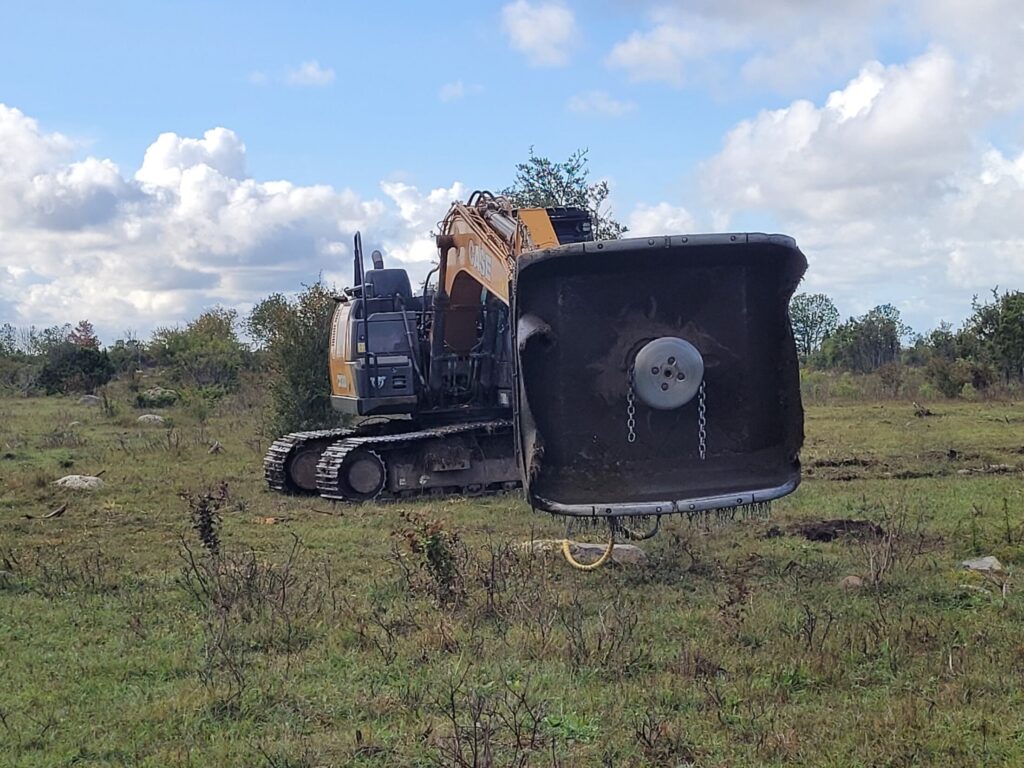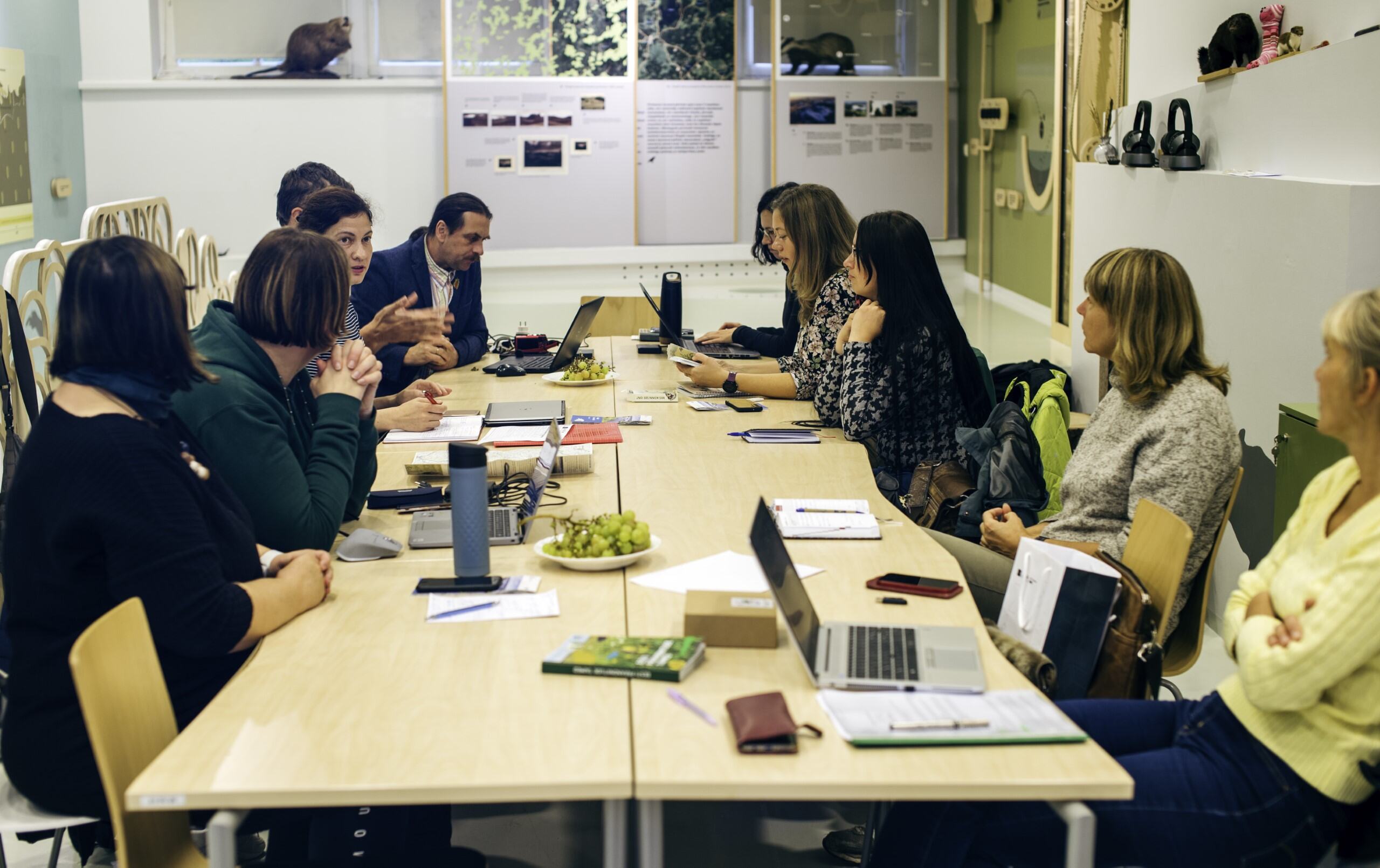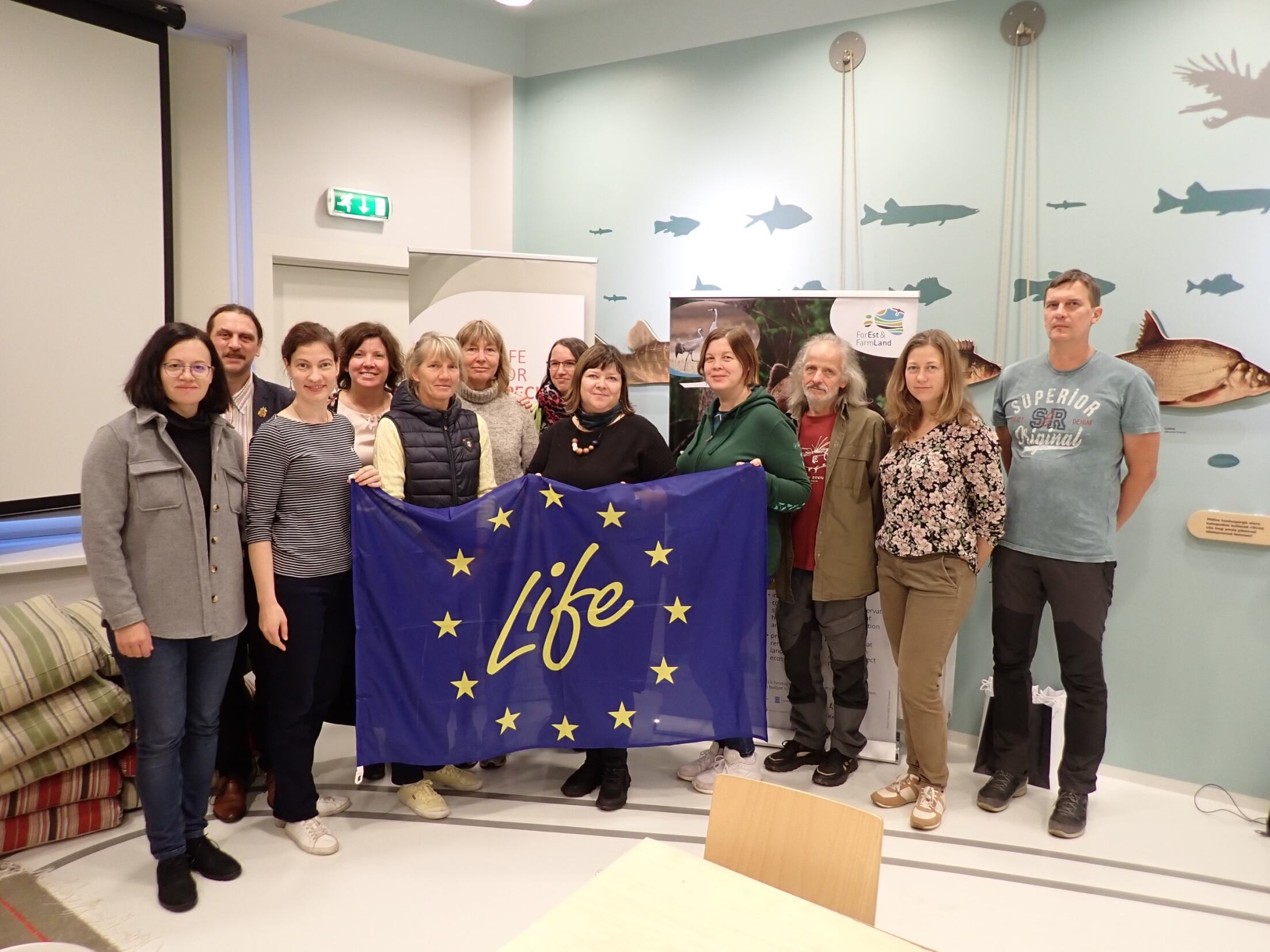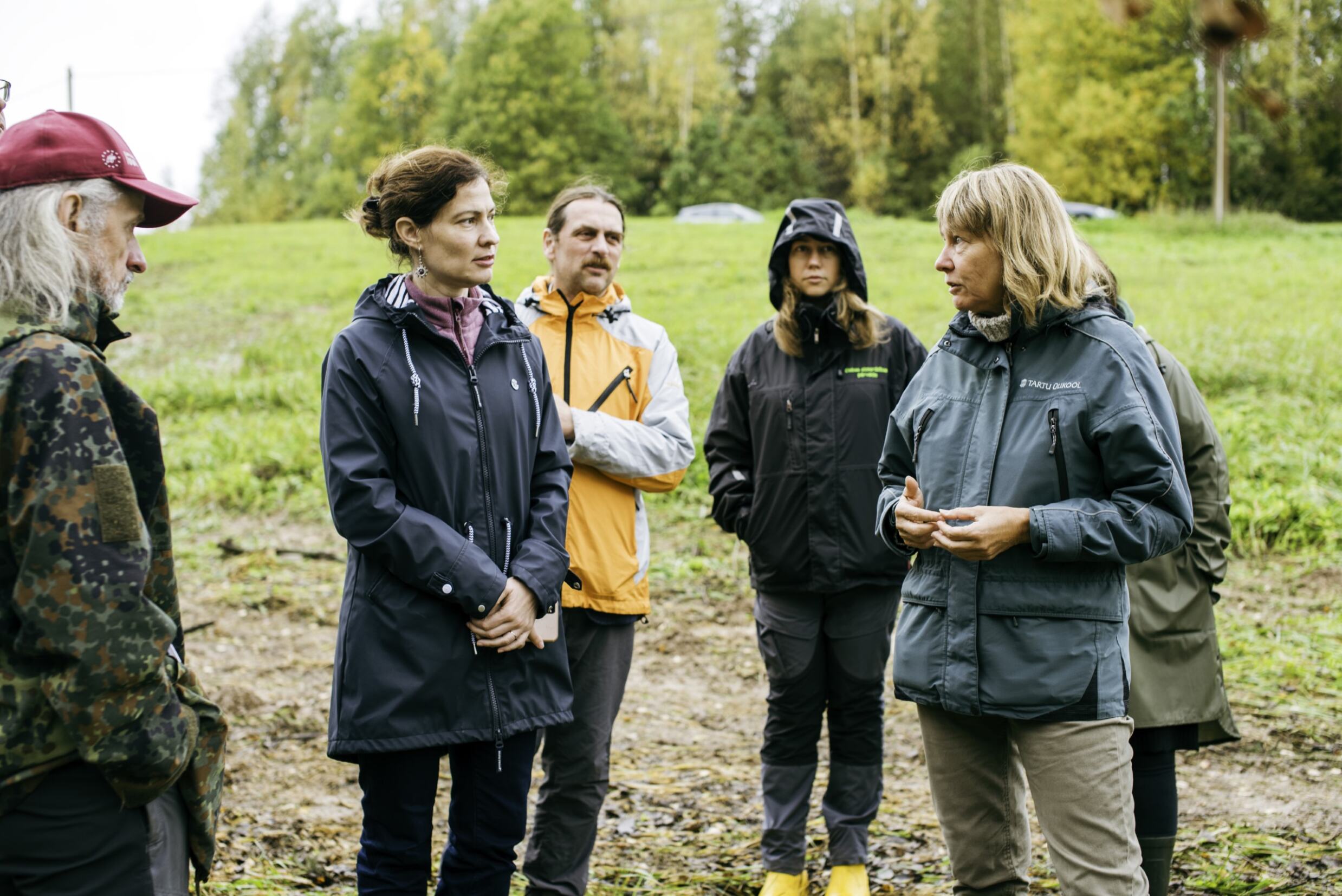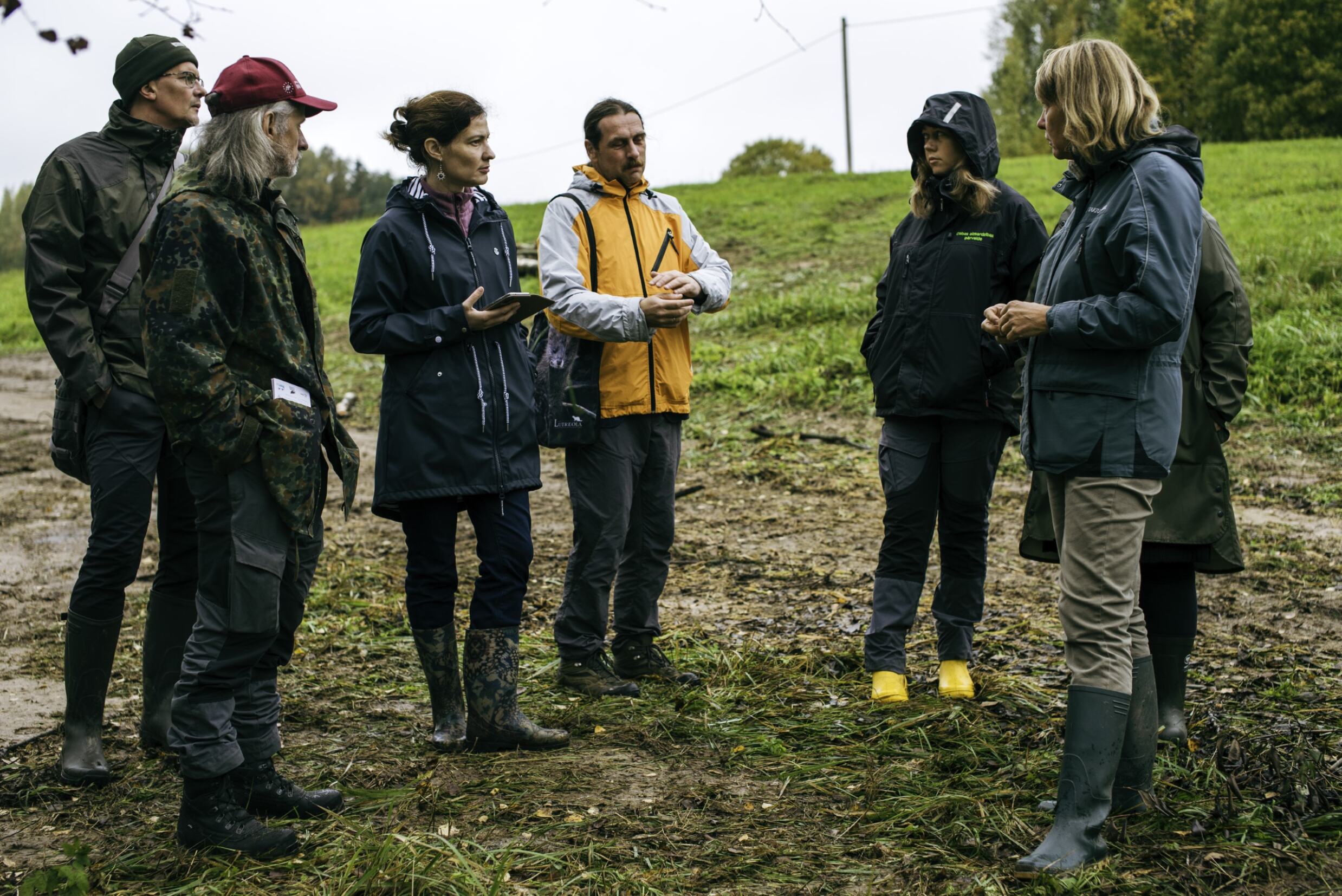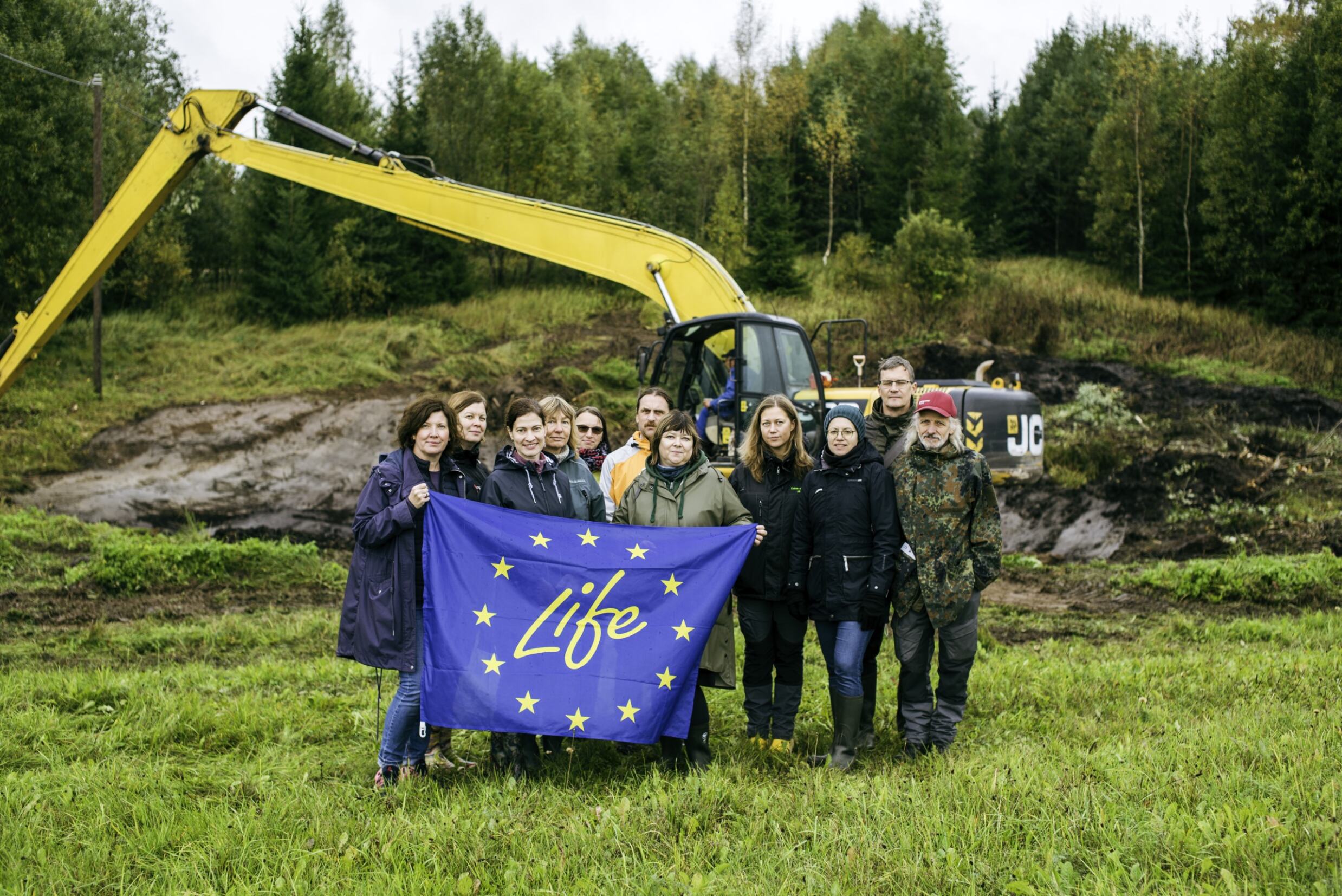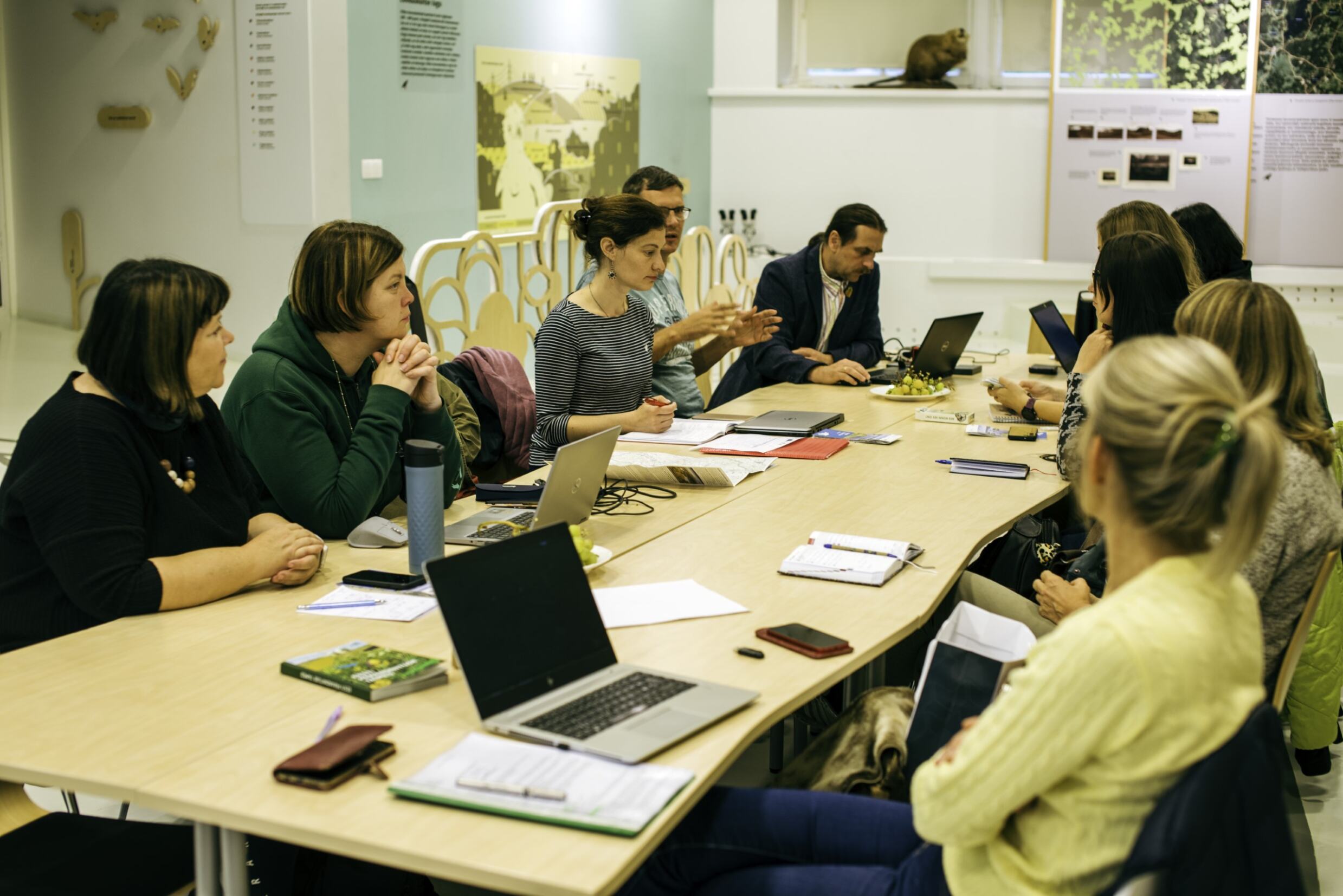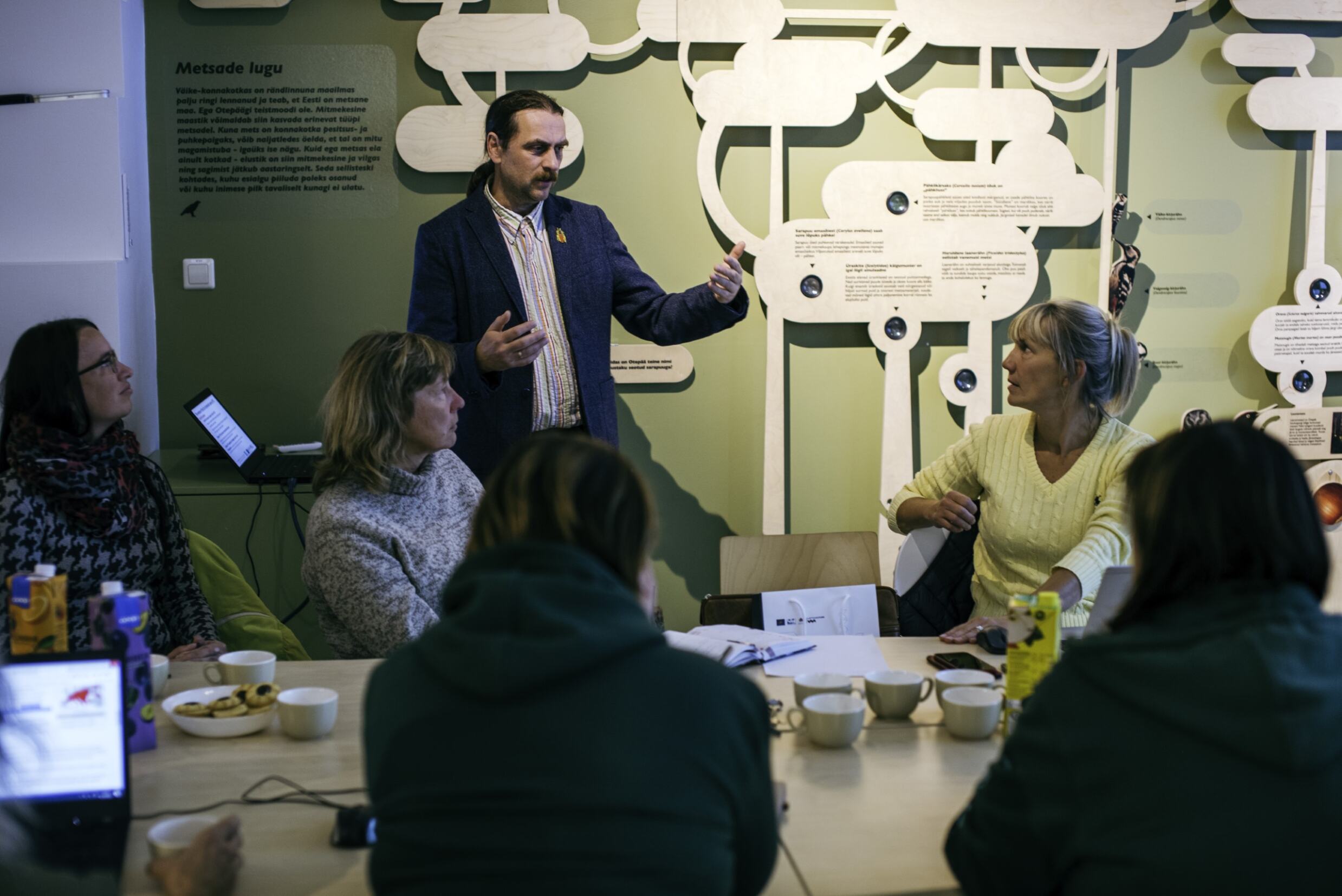Networking trip to Estonia
From October 4th to 6th, a delegation from the LIFE FOR SPECIES project, representing the University of Latvia's Institute of Biology and the Nature Conservation Agency, embarked on a valuable journey to Estonia for an exchange of expertise and networking. Representatives from the LIFE IP LatViaNature project also joined the delegation.
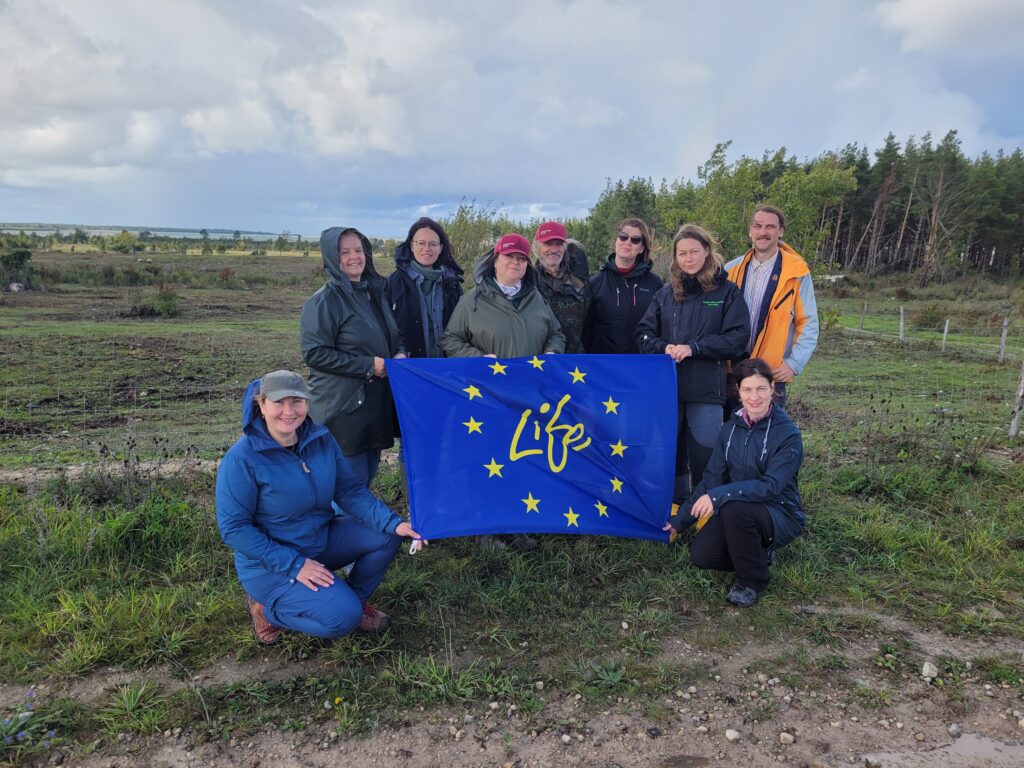
During this trip, the Latvian LIFE project teams delved into current issues and activities related to species and habitat conservation. They explored various initiatives aimed at restoring and monitoring different ecosystems in locations such as Muhu Island, Tartu, and the surrounding areas of Estonia, where several Estonian LIFE projects were actively engaged. Notably, they closely examined the ongoing restoration efforts of alvar grasslands on Muhu Island. These efforts were initiated under the LIFE+ nature project "Restoration of Estonian alvar grasslands" and are now continuing as part of the "LIFE connecting meadows" project. This restoration work involves creating park-like landscapes, restoring partially natural grasslands, coastal meadows, and reducing fragmentation in semi-natural landscapes. Various techniques, both technical and mechanical, along with controlled grazing, are employed to enhance conditions for preserving the genetic diversity of several species. The selection of habitats for restoration is based on a model developed within the GrassLIFE project, which identified the most valuable habitats requiring attention, many of which exist outside the Natura 2000 areas. Consequently, the activities observed on Muhu Island serve as an excellent example of the sustainability of results achieved across multiple LIFE projects.
The improvement of breeding habitats for amphibians is currently underway through the LIFE-IP ForEst&FarmLand project in Estonia. This project applies the best management practices established in previous LIFE Nature projects. Over the past decade or so, Estonia has witnessed a significant decline in amphibian populations, primarily due to intensified agriculture, the restoration of drainage systems, and the reduction of wetlands. To provide suitable breeding grounds for amphibians, historical habitats are being restored. This process involves draining or pumping out water initially, followed by excavating sediments down to the mineral (clay) layer. These water bodies are created in small clusters, typically consisting of 3 to 10 ponds, each varying in depth and strategically placed across different terrains to ensure water availability in at least some ponds during dry periods. Some of these ponds may remain dry during arid spells, reducing the populations of predatory aquatic insects and parasites.
Within the framework of the LIFE Mires Estonia project, substantial efforts have been invested in restoring the Soosaare bog, located within the Alam-Pedja nature reserve. Several years ago, approximately 120 hectares of this bog were drained for peat extraction during the Soviet era. Consequently, drainage ditches on the periphery of the territory have been blocked, gradually forming small pond complexes suitable for the breeding of moor frogs (Rana arvalis, R. temporaria). While the success of moor frog reproduction in these water bodies fluctuates from year to year, the overall results of these measures are considered successful. The ponds are being utilized, and the number of moor frog tadpoles has increased significantly, leading to a rise in the moor frog population. It is worth noting that moor frogs practically do not use the natural parts of the bog for breeding due to the physical and chemical properties of the water in the wet depressions and small ponds, which typically have a low pH. The diversity of newt species and the number of individuals have not significantly changed after bog restoration, including activities such as shrub and forest clearing, in the Soosaare bog. Automatic water level measurements and vegetation monitoring are also conducted using drones equipped with spectral sensors. However, the results of these observations regarding the success of bog restoration will only be interpretable several seasons after the implementation of these measures. Restoration efforts in the bog are ongoing, with monitoring of several species and habitats currently being conducted by specialists from the LIFE SIP AdaptEst project.
One of Estonia's valuable habitat types is the extensive inundated meadows. Within the LIFE SIP AdaptEst project, partial natural habitat management and restoration activities, including mowing and clearing, are being carried out in the inundated meadows in the Kärevere region of the Alam-Pedja nature reserve. These meadows cover an approximate area of 2000 hectares and serve as significant sites for bird migration and as one of the largest nesting sites for the common snipe (Gallinago media) in Estonia. These meadows are located along the Laeva River, which had been straightened during the Soviet era but was successfully restored to its natural course several kilometers long within the LIFE HAPPYRIVER project.
The trip also featured a joint seminar, where representatives from Latvian and Estonian LIFE projects, along with officials from the Estonian Ministry of Climate, discussed current issues and challenges related to the management of rare, endangered, and protected species in both Baltic countries. They exchanged insights into measures taken, public engagement in nature conservation, documentation and eradication of invasive species, and introduced the main tasks, planned activities, and results in species protection within the LIFE FOR SPECIES project in Latvia. Additionally, opportunities for further collaboration between institutions and a comparison of the legislation related to species protection in Latvia and Estonia were explored. Both Estonia and Latvia face similar challenges in species protection. Unlike Latvia, Estonia has already assessed the extinction risk of species according to IUCN criteria twice. These results are taken into account when planning further protection of rare and endangered species and related regulatory acts.
The impressions and insights gathered during the trip to Estonia will significantly contribute to the development of a new list of protected species in Latvia. The knowledge, information, and contacts established during this experience exchange will prove invaluable in the further implementation of the LIFE FOR SPECIES project and in future collaboration between both countries.
We extend our heartfelt appreciation to the Estonian LIFE projects for their warm hospitality!


